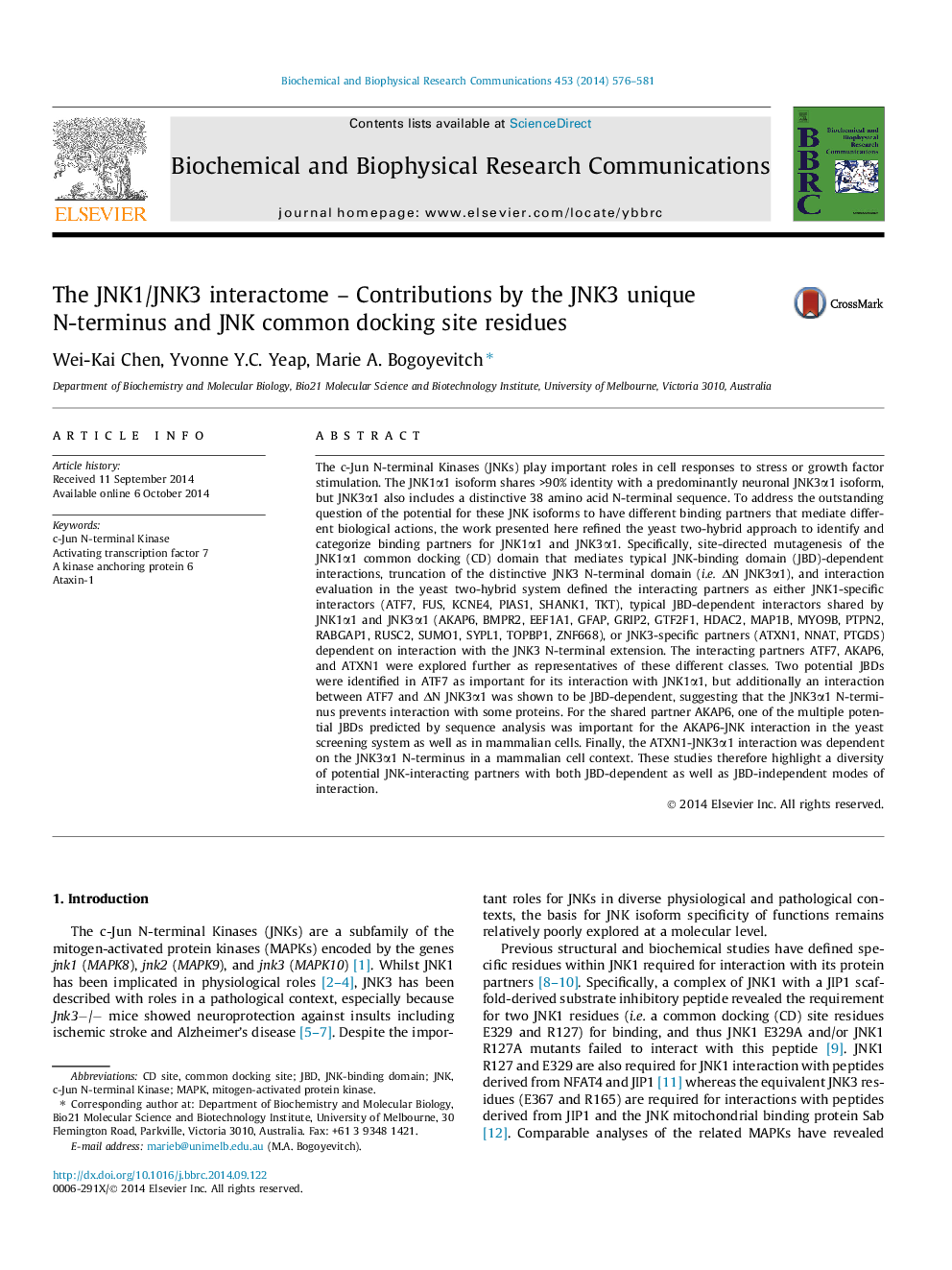| کد مقاله | کد نشریه | سال انتشار | مقاله انگلیسی | نسخه تمام متن |
|---|---|---|---|---|
| 1928449 | 1050355 | 2014 | 6 صفحه PDF | دانلود رایگان |

• Yeast two-hybrid screening identified JNK1/3-specific and JNK1/3-shared partners.
• Directed analysis defined interaction requirements of the JNK common docking domain.
• The JNK3 N-terminus prevented interaction with ATF7.
• The JNK3 N-terminus directed interaction with ATXN1.
The c-Jun N-terminal Kinases (JNKs) play important roles in cell responses to stress or growth factor stimulation. The JNK1α1 isoform shares >90% identity with a predominantly neuronal JNK3α1 isoform, but JNK3α1 also includes a distinctive 38 amino acid N-terminal sequence. To address the outstanding question of the potential for these JNK isoforms to have different binding partners that mediate different biological actions, the work presented here refined the yeast two-hybrid approach to identify and categorize binding partners for JNK1α1 and JNK3α1. Specifically, site-directed mutagenesis of the JNK1α1 common docking (CD) domain that mediates typical JNK-binding domain (JBD)-dependent interactions, truncation of the distinctive JNK3 N-terminal domain (i.e. ΔN JNK3α1), and interaction evaluation in the yeast two-hybrid system defined the interacting partners as either JNK1-specific interactors (ATF7, FUS, KCNE4, PIAS1, SHANK1, TKT), typical JBD-dependent interactors shared by JNK1α1 and JNK3α1 (AKAP6, BMPR2, EEF1A1, GFAP, GRIP2, GTF2F1, HDAC2, MAP1B, MYO9B, PTPN2, RABGAP1, RUSC2, SUMO1, SYPL1, TOPBP1, ZNF668), or JNK3-specific partners (ATXN1, NNAT, PTGDS) dependent on interaction with the JNK3 N-terminal extension. The interacting partners ATF7, AKAP6, and ATXN1 were explored further as representatives of these different classes. Two potential JBDs were identified in ATF7 as important for its interaction with JNK1α1, but additionally an interaction between ATF7 and ΔN JNK3α1 was shown to be JBD-dependent, suggesting that the JNK3α1 N-terminus prevents interaction with some proteins. For the shared partner AKAP6, one of the multiple potential JBDs predicted by sequence analysis was important for the AKAP6-JNK interaction in the yeast screening system as well as in mammalian cells. Finally, the ATXN1-JNK3α1 interaction was dependent on the JNK3α1 N-terminus in a mammalian cell context. These studies therefore highlight a diversity of potential JNK-interacting partners with both JBD-dependent as well as JBD-independent modes of interaction.
Journal: Biochemical and Biophysical Research Communications - Volume 453, Issue 3, 24 October 2014, Pages 576–581